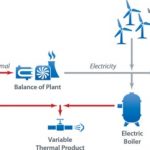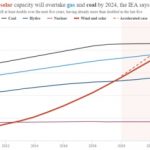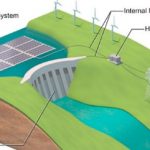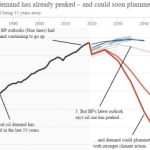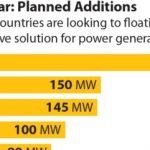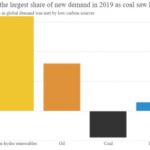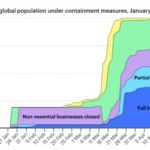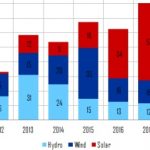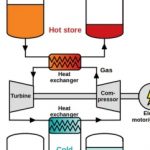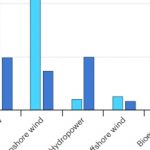Today’s solutions cannot give us a successful transition on their own. That’s why the innovations coming down the pipeline are so important. One way to measure what, and who, is innovating is to look at the number of patents being filed for low carbon energy (LCE), explains Sean Fleming writing for the World Economic Forum. He summarises the latest report from the European Patent Office and the IEA, “Patents and the energy transition: Global … [Read more...]
Nuclear-Wind hybrid plants for grid stability, Power-to-X and more
How would you use a nuclear-wind hybrid plant and maximise its potential? When intermittent wind’s output falls, nuclear can step in to feed the grid. When it’s not doing that it can use its power to run the production of a wide range of commodities: from biofuels, hydrogen, pumped hydro to wastewater purification, desalination, chemical manufacturing and more – including straightforward thermal power for industry. In collaboration with NREL, the … [Read more...]
IEA’s “accelerated case” becoming the norm? Global Wind + Solar to overtake Gas and Coal by 2024
The IEA’s 2019 “accelerated case” for renewables is turning into this year’s “main case”. It predicts that Wind and Solar capacity combined will overtake both Gas and Coal globally by 2024. Josh Gabbatiss at Carbon Brief summarises the IEA’s Renewables 2020 report. Within five years, renewables will constitute 1/3 of all electricity generation, equivalent to the combined demand of China and the EU. Virtually all global growth in electricity … [Read more...]
The IEA’s World Energy Outlook 2020 at a glance
This month the IEA published its annual flagship World Energy Outlook (WEO). Simon Göss at Energy Brainpool picks out his highlights. This year’s WEO has four scenarios, two of them new: an updated “Stated Policies Scenario” (STEPS: what governments have promised), the new “Delayed Recovery Scenario” (DRS: due to Covid), an updated “Sustainable Development Scenario” (SDS: what’s needed to meet the Paris targets), and the new “Net Zero Emissions … [Read more...]
Floating Solar on existing Hydro reservoirs: potential for 10,600 TWh/year
The idea is simple. Float solar panels on the reservoirs of hydroelectric dams. The new solar can piggy back on the existing grid connections. They complement each other by being strong when the other is weak: solar for the dry season, hydro for the wet. The hydro can provide pumped storage for the excess solar. Finally, the reservoir is readily available space. A team at the U.S.'s National Renewable Energy Laboratory have calculated the … [Read more...]
BP Outlook 2020: “peak oil” has already happened
BP’s latest Outlook predicts – for the first time - that oil saw its peak in 2019. In each of BP’s Outlooks, published annually since 2011, they have revised their predictions for the global energy landscape to 2050 as new data comes in. The growth of clean energy and the changing shape of climate policies have seen each successive forecast increase the share of renewables at the expense of fossil fuels. This year even gas has seen its prospects … [Read more...]
“Vertical well” Pumped-Storage Hydro: small, cheaper, 1-to-100MW range
In the U.S., pumped-storage hydropower (PSH) already provides 95% of all utility-scale energy storage. So any innovations that cut costs or extend PSH usability should be well received. The National Renewable Energy Laboratory (NREL) and its partners Obermeyer Hydro, Microtunneling Inc. and Small Hydro Consulting are demonstrating the advantages of a small pump installed in a vertical “well” rather than an underground powerhouse, one of the most … [Read more...]
Floating Solar: can it help ASEAN reverse coal’s continued rise?
Floating solar farms may be gaining traction in Asia. Capacity is still small: by 2019 the big players Japan and China had a combined floating photovoltaic (FPV) installed capacity of 1.3GW. But the ASEAN countries that had virtually nothing before 2019 now have over 51MW and have planned in another 858MW. A report by Sara Jane Ahmed and Elrika Hamdi at IEEFA explains why FPV is looking better and cheaper at balancing out peaks and troughs than … [Read more...]
BP’s world energy review: 2019 saw clean electricity match coal
Simon Evans at Carbon Brief summarises BP’s 69th edition of its influential annual statistical review of world energy, looking at 2019. Overall, total energy demand rose, though slower than usual. Renewables were the largest source of new energy, but were closely followed by oil and gas. Coal use dropped again, the fourth drop in six years, thanks to historic declines in the EU and the US. But continued growth in SE Asia, China and India leaves … [Read more...]
IEA projections 2020: energy demand plunges but Renewables still grow at Gas, Coal’s expense
The IEA has made its projections for the impact of the pandemic lockdown on energy demand in 2020 (they say it’s too early for them to assess anything more long term), and its implications for the different generation types. This article summarises their special Global Energy Review 2020, published at the end of last week. It assumes that lockdowns are eased this year and growth gradually returns. With that, global energy demand will fall 6% in … [Read more...]
China’s 2019 electricity generation reviewed as its next 5-year plan is drafted
Simon Göss breaks down the totals and additions for electricity generation in China. In 2019 the total reached 7,325 TWh (more than twice Europe’s) after adding 330 TWh (more than half Germany’s total). Of that 330 TWh, 120 TWh came from thermal (90%+ coal). But the numbers were dominated by renewables (hydro, wind, solar) which added almost 160 TWh. Though that’s the third year of declining renewables additions, wind and solar curtailment is … [Read more...]
Pumped Thermal Electricity Storage: grid-scale, cheap materials, known tech, compact, install anywhere
We need to store the huge quantities of excess electricity generated by variable renewables. But what’s the best way? Currently, over 99% of large-scale electricity storage uses pumped hydro dams. But geography severely limits where you can build one. And the growth of grid-scale batteries is limited by raw material costs and short lifecycles. Antoine Koen and Pau Farres Antunez at Cambridge University review an important alternative, Pumped … [Read more...]
Pumped Storage Hydropower 2.0: steel dams, underground, or 1-10MW modular
Pumped Storage Hydropower (PSH) is one of the most cost-effective utility-scale options for grid energy storage. The U.S. has plants across the country, totalling over 20GW of capacity. Now the Dept of Energy (DoE) is backing four teams developing blue sky (water?!) ideas that should make the next generation of PSH even cheaper. In this article the National Renewable Energy Laboratory (NREL) tracks their progress so far. They include dams made of … [Read more...]
2019-2024: competitive auctions will launch over 2/3rds of utility-scale renewables, says IEA
Government support for new utility-scale capacity is being replaced with competitive auctions, the surest sign that the commercial appetite for renewables - particularly solar PV and onshore wind - is growing strong. This article by the IEA pulls out the essential numbers from their annual Renewables 2019 report (their 5-year market analysis and forecast for renewable energy and technologies in the electricity, heat and transport sectors). The … [Read more...]
Why renewables need gas: case study USA
Everyone is predicting the continued expansion of gas through to 2050. Jim Conca reviews the state of play in the U.S. to explain why that projection makes sense. The welcome and rapid growth of renewables still needs something to provide backup load-following to a growing and increasingly intermittent electric grid. Gas is the cheapest to roll out and can keep prices low for decades. The other two contenders, hydro and nuclear, just can’t match … [Read more...]



